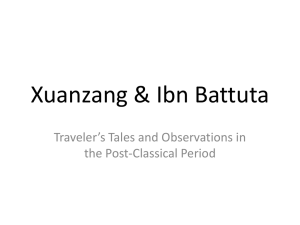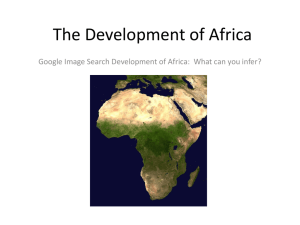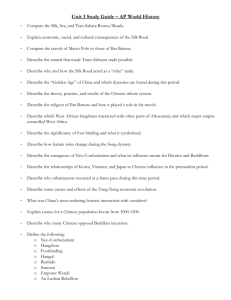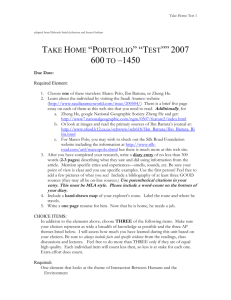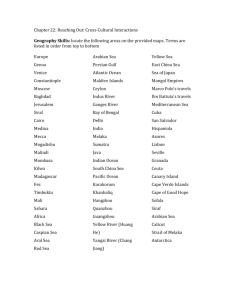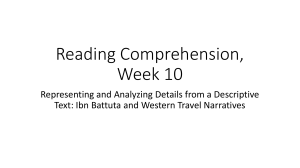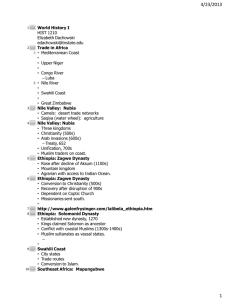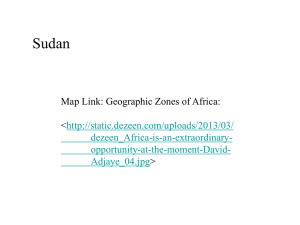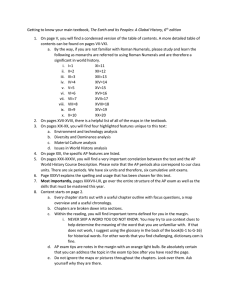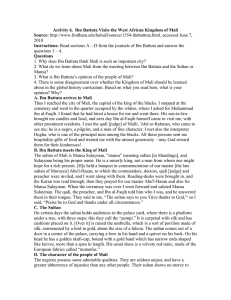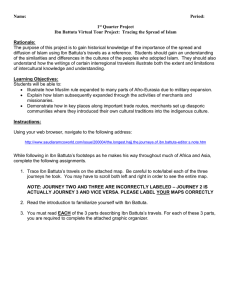Introduction to Ibn Battuta
advertisement
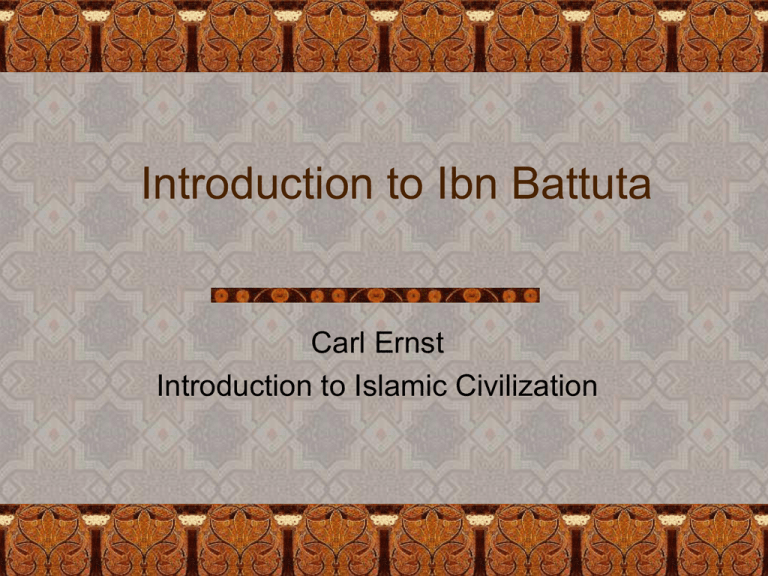
Introduction to Ibn Battuta Carl Ernst Introduction to Islamic Civilization General remarks on Ibn Battuta (1304-1368 or 1369) Example of “the premodern roots of globalization” equal to over 40 modern countries Complete translation of travels in four volumes (1929-1994, Hakluyt Society) Imitated by modern travelers: Tim Mackintosh-Smith, Carolyn McIntyre Numerous museum exhibits, film series 2 The Rihla or travel book: chief characteristics Literary autobiography and descriptive compendium, “as told to” the scholar Ibn Juzayy Chronological problems in the reconstruction of the voyage, nearly 30 years after his departure from Morocco Portrait of political and cultural elites Emphasis on cosmopolitan tendencies over local diversity 3 Journeys: 1 4 2 5 3 6 4 7 5 8 6 9 7 10 Key characteristics of Ibn Battuta Comparison with Marco Polo, seen as an alien in Mongol Asia Ibn Battuta was received by other Muslims as a familiar and respected figure Concept of the “global” Afro-Eurasian Ecumene or “inhabited world” (Hodgson, McNeill) opened up by the time of Ibn Battuta Role of nomadic invaders 11 Historical issues relating to Ibn Battuta Problem of “Eurocentric” history – focuses on Islam only in terms of impact on European institutions Erroneous view of Islam as “irrational” and Europe as scientific Impact of Turkish nomads on Middle East Impact of Muslim merchants on Indian Ocean 12 Conditions making possible the career of Ibn Battuta “egalitarian contractualism” (Hodgson) in Muslim societies acknowledging the shari`a Post-Mongol urban-based society: 13 Multiple journeys of Ibn Battuta 1. Pilgrimage to Mecca and Medina four times 2. Visiting Sufi masters, lodges, and shrines. 3. Seeking legal scholars and their knowledge in great cities 4. Seeking patrons in the great capitals of Asia and Africa. 14 Contest: Two things to look for How many times, and where, did Ibn Battuta get married? How many times did he make contact with Sufis or Sufi centers? “His traveling career turned out to be, in essence, a grand world tour of the lodges and tombs of famous Sufi mystics and saints.” (p. 24) There will be a prize for the people who answer these two questions correctly 15 How to read this book Go back and check locations and dynasties for interesting tidbits to use in journals Connect the observations of Ibn Battuta to key themes and topics of the course up to this date Frontiers and borders Schools and structures of Islamic law Holy sites International economy Political structures 16
